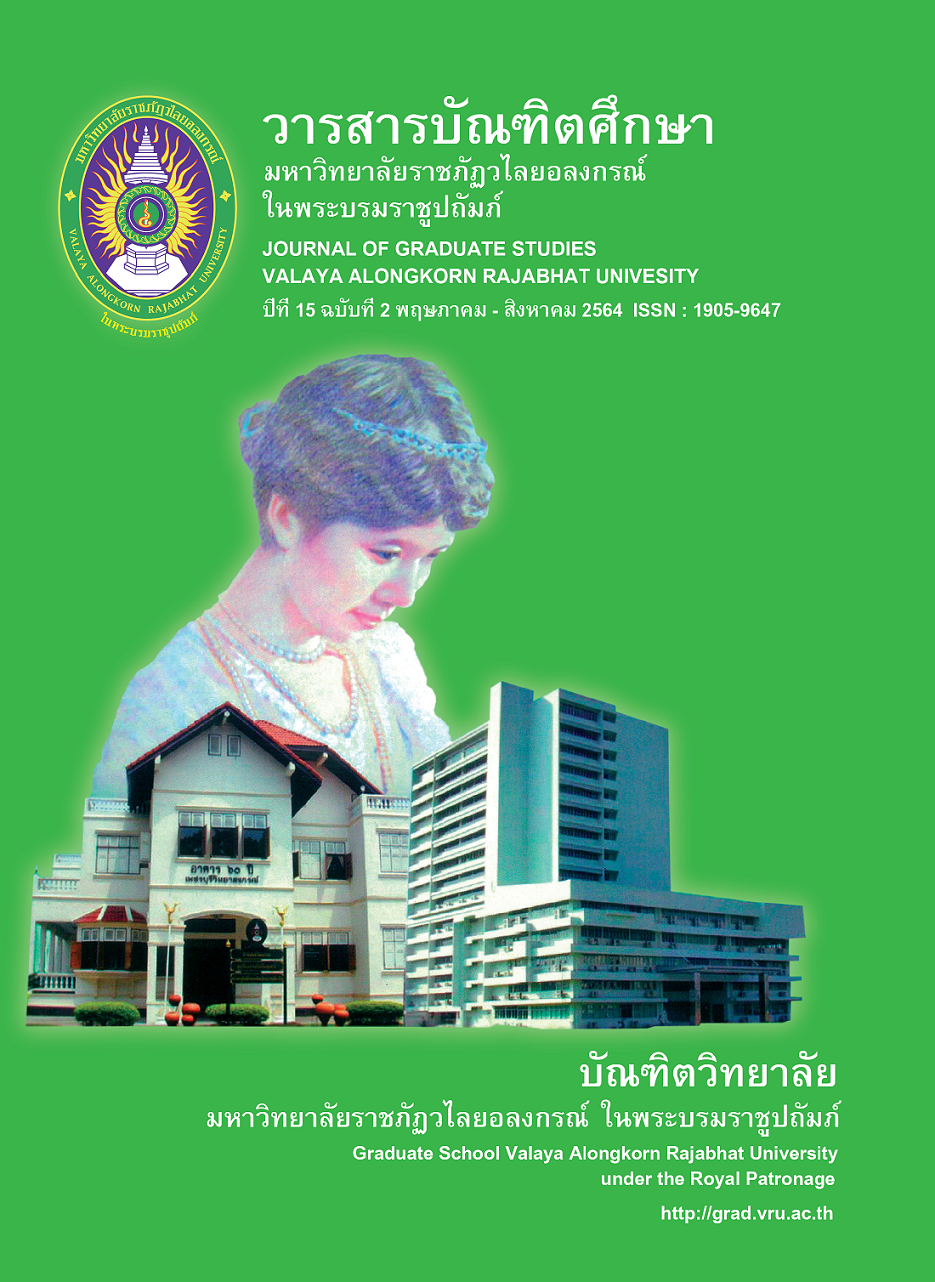DEVELOPMENT PERSPECTIVES ON BUDDHIST TOURISM
Main Article Content
Abstract
This article is an academic article to present the viewpoint on Buddhist tourism development at present. The objective is to present development in 3 areas: 1) the aspect of creating Buddhist tourism identity It is to promote the identity of tourism by creating distinctive points of tourism according to Buddhism. Organize activities to attract tourists to visit the temple continuously Develop environmental landscapes to be in line with Buddhist tourism. Developing architecture to support the elderly tourists and the place of meditation is clean and peaceful. 2) On the creation of a Buddhist tourism network Is creating a network between organizations for Buddhist tourism By driving Buddhist tourism to have a strong potential and is equally popular with other types of tourism, and 3) creating Buddhist tourism innovation Is to bring technology to develop a mechanism for managing Buddhist tourism to be more efficient Build and develop an information system for integrated Buddhist tourism Develop the capability of competing with the Buddhist and international tourism of the world with maximum efficiency and benefits
Article Details

This work is licensed under a Creative Commons Attribution-NonCommercial-NoDerivatives 4.0 International License.
บทความทุกเรื่องได้รับการตรวจความถูกต้องทางวิชาการโดยผู้ทรงคุณวุฒิ ทรรศนะและข้อคิดเห็นในบทความ Journal of Global of Perspectives in Humanities and Social Sciences (J-GPHSS) มิใช่เป็นทรรศนะและความคิดของผู้จัดทำจึงมิใช่ความรับผิดชอบของบัณฑิตวิทยาลัย มหาวิทยาลัยราชภัฏวไลยอลงกรณ์ ในพระบรมราชูปถัมภ์ กองบรรณาธิการไม่สงวนสิทธิ์การคัดลอก แต่ให้อ้างอิงแหล่งที่มา
References
Apakaro, S. (2015). Kān Thoṅgthiao Thāng Phraphūtthasātsanā Lae Watthanathām: Nayobāi Phonkrathop Lae Kān Chatkān Choeng Khrueakhai Phuea Soṅgsoem Sāng Chitsāmnuek Ruam Thāng Prawattisāt Lae Watthanathām Khoṅg Prachākhom Āsian [Religious and Cultural Tourism: Policy, Impact, and Network Management for Promote Consciousness of Histories and Culture in Asean Community]. Retrieved From https://elibrary.trf.or.th/project content.asp?PJID=RDG5850051.
Cheekiwong, U. (2005). Kān Thoṅgthiao Choeng Niwet [Ecotourism]. Bangkok: Starlight.
Chuchat, C. (2000). Ūtsāhakām kān Thoṅgthiao [Tourism industry]. (2nd edition). Chiang Mai: Chiang Mai Rajabhat Institute.
Collier, A. & Harraway, S. (1997). Principler of tourism. Auckland: Longman.
Cooper, C. & Boniface, B. G. (1998). Geography of travel and tourism. UK: Butterworth Heinemann.
Department of Religious Affairs, Ministry of Culture. (2013). Khūmūe Kān Patibat Satsana Phithī [Ordinance practice guide]. Bangkok: the Agricultural Co-operatives Federation of Thailand, LTD.
Department of Tourism. (2018). Phāen Yūtthāsāt Phātthāna Kān Thongthīao Pho.So.2561 - 2564 Khong Krom Kān Thongthīao [The Tourism Development Strategic Plan 2018 – 2021]. Bangkok: VIP COPY PRINT.
Fine Arts Department. (2007). Ūat Phāp Kāo Lāo Khwāmlaṅg [Showing off old pictures]. Nakhon Pathom: Petchkasem Printing Group.
Gee, Choy & Maskens, J. C. (1984). The Travel Industry. Westport Connecticut: AVI Publishing Retrieved From http://office.cpu.ac.th/researchoffice/index.php?option=com_content&view=article&id=57&Itemid=51
McIntosh, R. W., and Goeldner, C. R. (1986). Tourism Principle, Practices, Philosophies. 5th ed. New York: John Wiley and Sons, Inc.
Phra Brahmagunabhorn (P. A. Payutto). (2007). Khwāmsāmkhan Khoṅg Phraphūtthasātsanā Nai Thāna Sātsanā Prachām Chāt [The importance of Buddhism as a national religion]. (11nd edition). Bangkok: thammasapa.
Sangchoei, T. (2007). Ūtsāhakām Kān Thoṅgthiao Lae Borikān [Tourism and service industry]. Phetchaburi: Faculty of Management Science Silpakorn University Information Campus.
Singchuwong, S. (2003). Wiwatthanākān Laeng Thoṅgthiao : Korani KoChang Changwat Trāt [Alternative : Tourist area cycle of evolution : a case study of Koh Chang, Trat province]. (Master of Thesis). Natthawattiyalaya Branch, Mahidol University.
Tanguthaisuk, D. (2009). Sakkayaphap Lāe Khwamphrom Khoṅg Sapphayākon Kān Thoṅgthiao Nai Changwat Nakhon Sawan [Potential and readiness of tourism resources in Nakhon Sawan province]. Retrieved From http://www.ttresearch.org/home/images/2553_3/3.pdf.
William, B. R. (1992). Strategies for Innovation. John Wiley and Sons, Inc.


